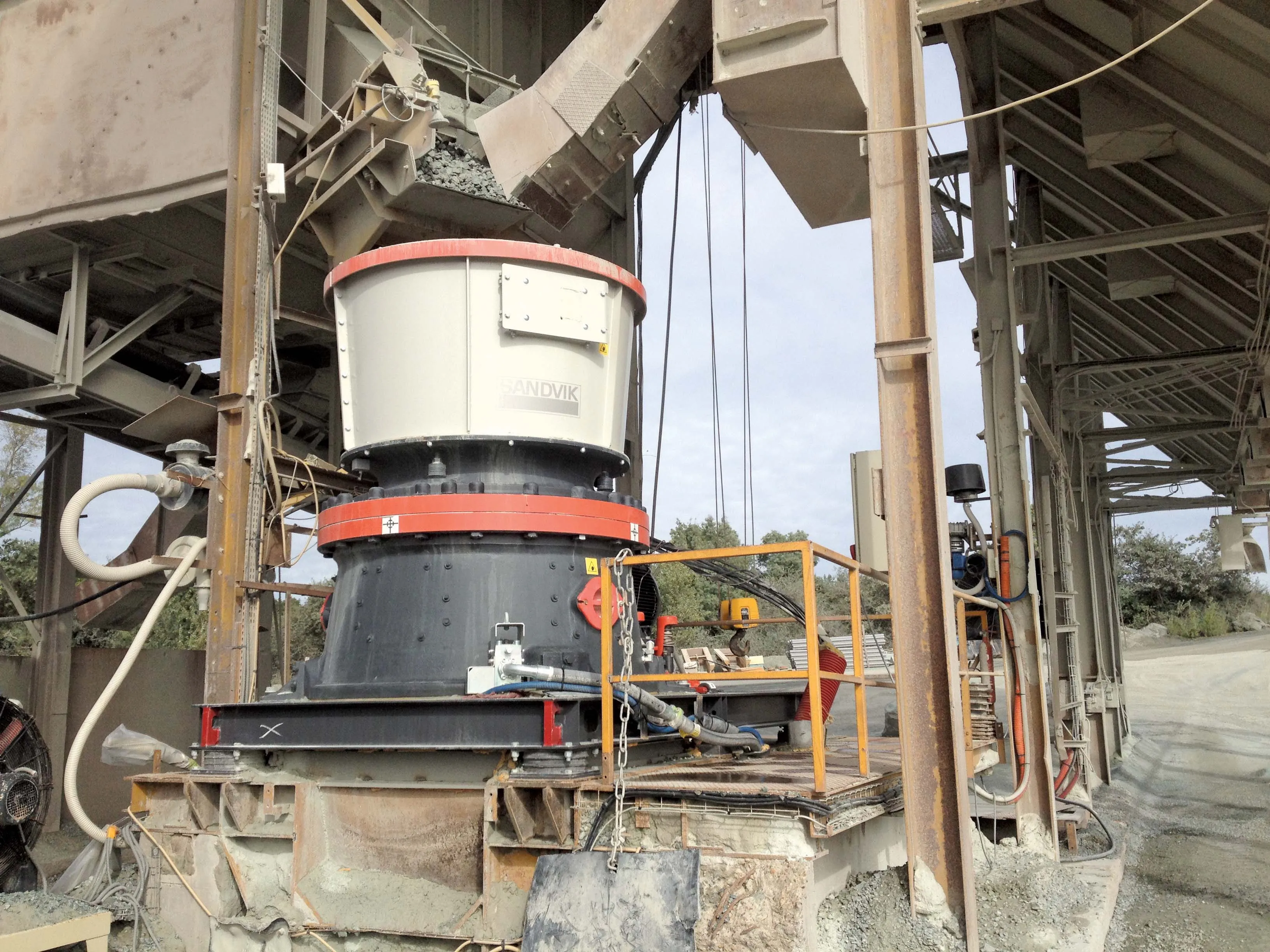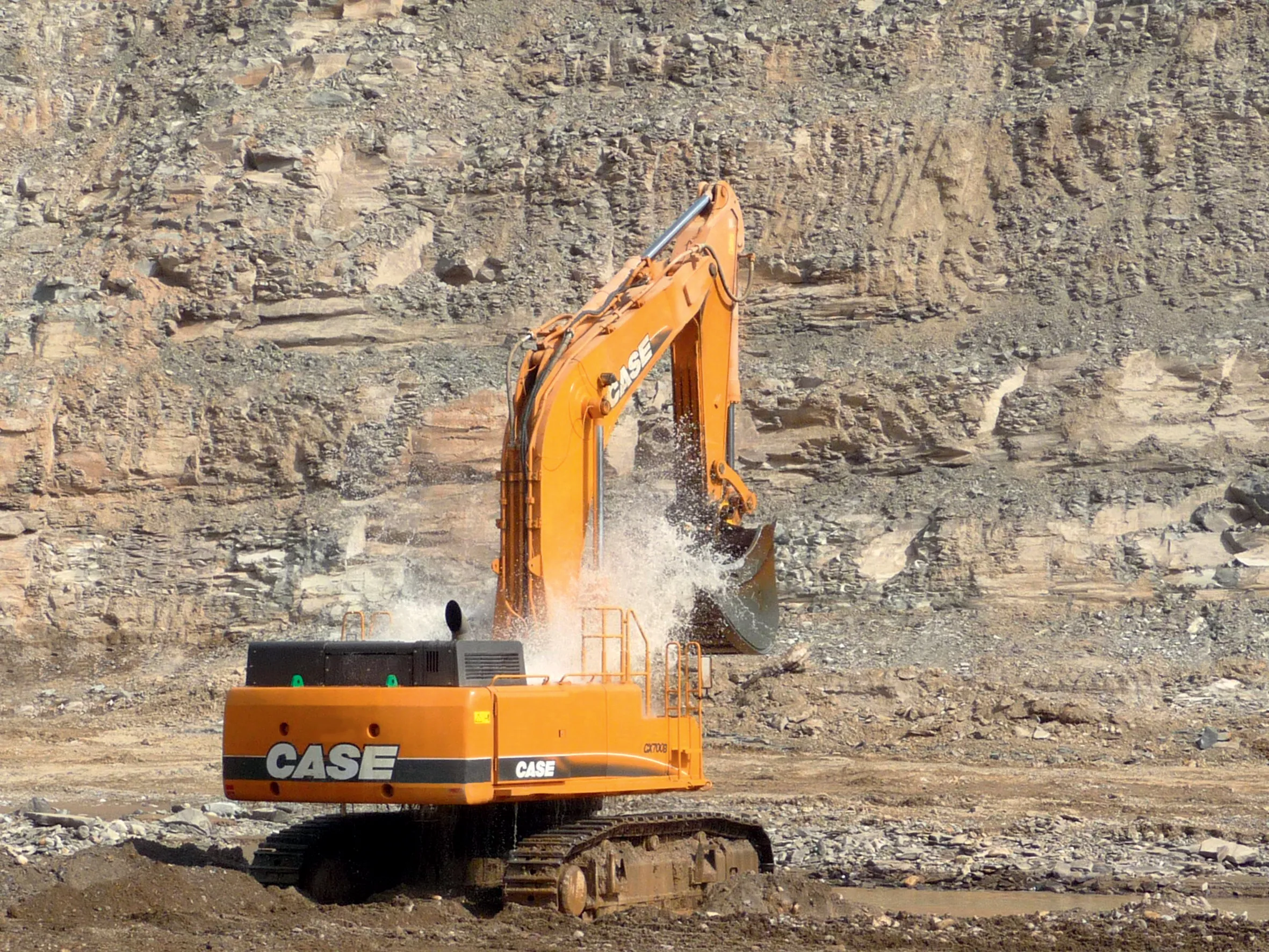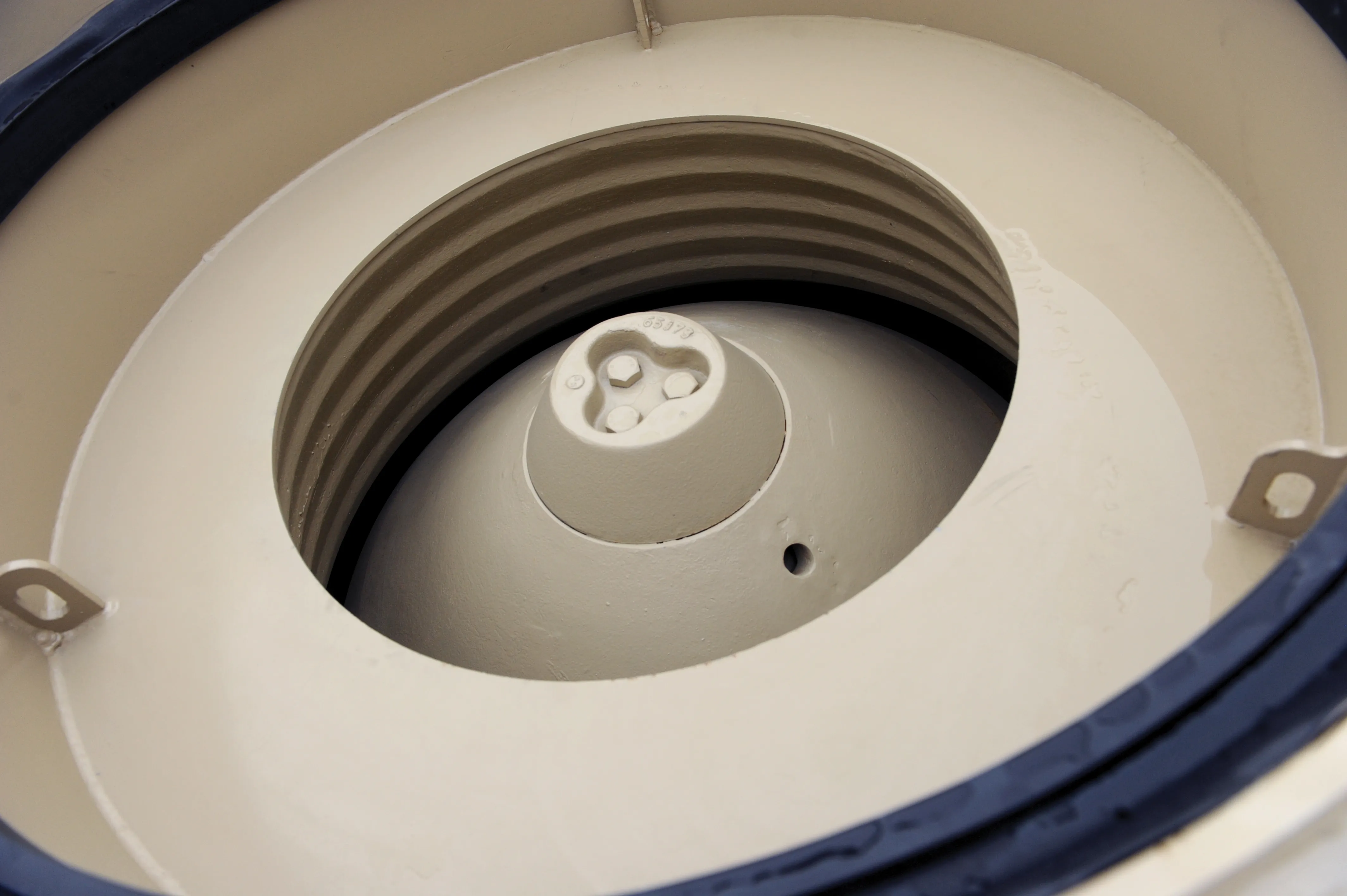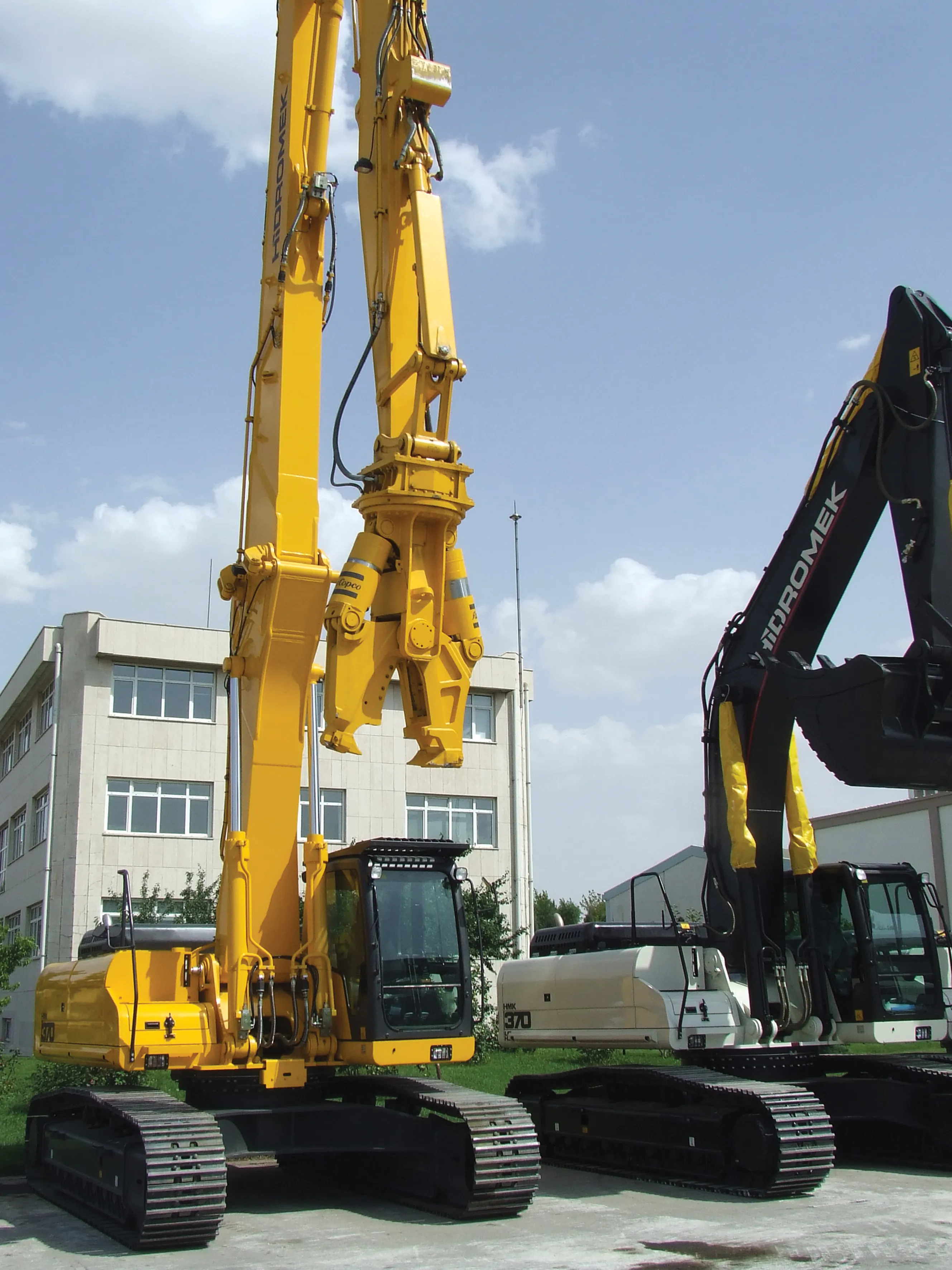Indeco's innovative HP18000 hydraulic hammer is now being proven in a tough demolition application in the US. The Italian company hopes to sell more of its innovative HP18000 models now that its class-leading hydraulic system is proving its worth in the field. Tipping the scales at an impressive 11tonnes, the HP18000 is now the biggest breaker available on the market anywhere and is designed for use on carriers that weigh up to 140tonnes. Some 4.6m long and with a 250mm diameter tool, the HP18000 can delive
February 27, 2012
Read time: 2 mins
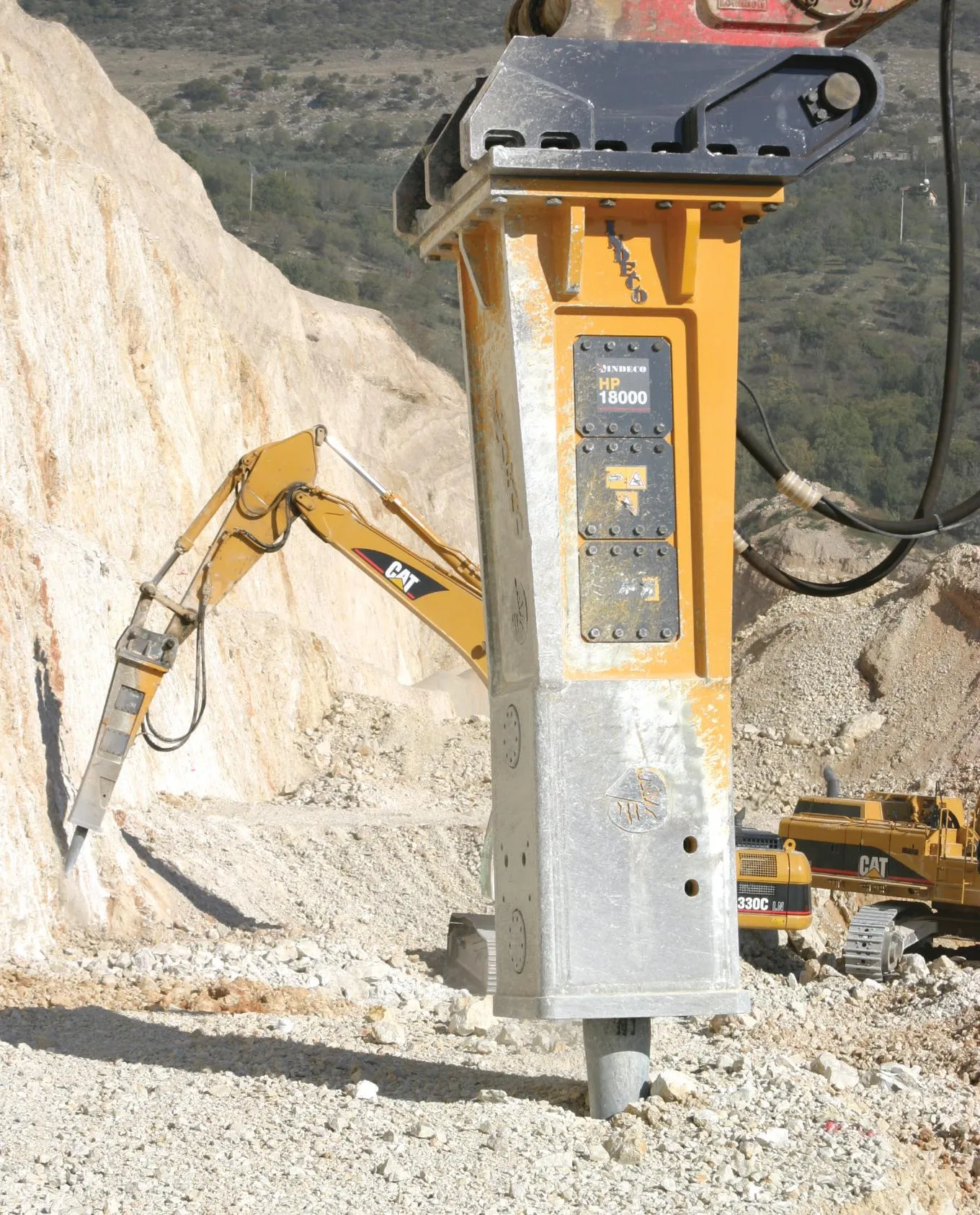
The Italian company hopes to sell more of its innovative HP18000 models now that its class-leading hydraulic system is proving its worth in the field.
Tipping the scales at an impressive 11tonnes, the HP18000 is now the biggest breaker available on the market anywhere and is designed for use on carriers that weigh up to 140tonnes. Some 4.6m long and with a 250mm diameter tool, the HP18000 can deliver 460blows/minute and is said to offer a significantly greater breaking performance than existing units in the 7tonne hammer class. This breaker suits duties in the largest demolition projects, as well as in primary winning in quarrying or mining applications.
To introduce the HP18000, Indeco had to develop a new hydraulic system able to cope with the huge forces its hammer mechanism generates. The central feature of this is an automatic system that governs operating speed and power variation within the hydraulic circuit. Called the collateral damage prevention system, this can warn the operator of any impending technical problems and prevent costly damage before it occurs. As a result, downtime due to maintenance is reduced and uptime increased, boosting overall performance.
Indeco says that the HP18000 has been designed to offer a long working life and high reliability and features an external regulation system mounted on the casing. Although the breaker represents a significant increase in scale over the firm's existing 7.8tonne HP12000 model, this larger unit shares similar design features such as the proven central greasing system as this helps reduce wear and extend operating life.
The rugged and durable case design for the HP18000 and its mounting system are also similar to that of the HP12000, although increased in scale.


